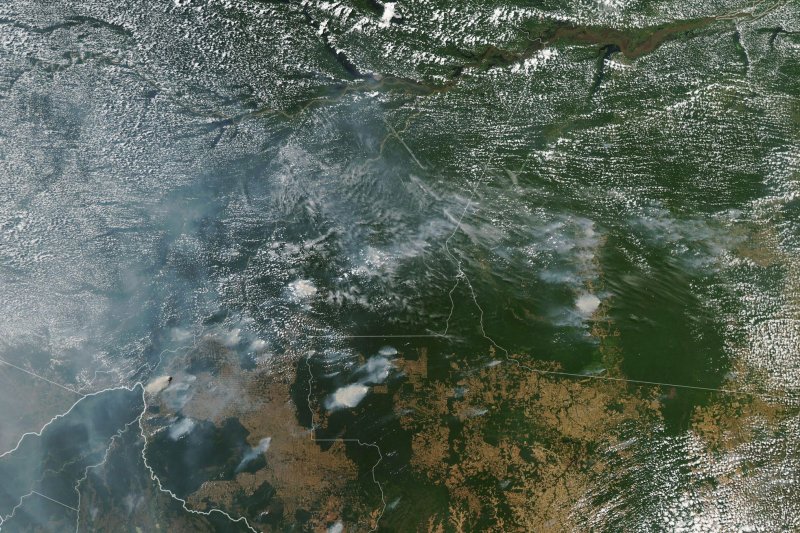Study: Up to 50K people in Brazil hospitalized due to wildfire smoke annually
Sept. 8 (UPI) -- Nearly 50,000 Brazilians are hospitalized annually after exposure to air pollution from wildfires, an analysis published Wednesday by the Lancet Planetary Health found.
And that figure may be rising, given that in 2020, the number of reported wildfires increased by just under 13% to reach a 10-year high, the data showed.
Children age 4 and younger and adults age 80 and older account for the bulk of fire-related hospitalizations in Brazil, the researchers said.
A similar analysis published in July found that wildfire smoke in California increased hospitalizations for heart and respiratory problems by up to 5%.
"This data reveals significant health impacts of wildfires," study co-author Yuming Guo said in a press release.
The findings come "at a time before the 2019 fires across Brazil captured global attention followed by an equally intense fire period last year," said Guo, a professor of public and preventive health at Monash University in Melbourne.
Some 260 major fires have been detected in Brazil's Amazon region in 2021, and collectively have burned more than 260,000 acres.
Wildfires have been more common in Brazil since the 1990s, largely due to deforestation and forest degradation from human activities such as mining, logging and farming, researchers said.
While fire activities generally occur during the dry season in August to November, the duration of the dry season is lengthening, according to earlier research.
For this study, Guo and his colleagues analyzed data on more than 143 million hospitalizations across 1,814 cities and towns in Brazil over a 16-year period, from 2000 to 2015.
Collectively, the communities included in the study covered nearly 80% of the country's population, according to the researchers.
They compared the hospitalization statistics to data on daily wildfire-related PM2.5 levels in the air in each of these towns.
PM2.5, or particulate matter, refers to small airborne particles that make up smoke and other forms of pollution. These microscopic particles can trigger asthma, heart attacks, strokes and cause a decrease in lung function.
Between 2000 and 2015, an increase of 10 micrograms of pollutant per cubic meter of air was associated with a 0.5% increase in hospitalizations directly related to exposure to wildfire pollutants, the data showed.
This equates to 35 cases of wildfire hospitalizations per 100,000 people annually, which is more than 48,000 people, the researchers said.
Although most wildfires occur in remote areas of Brazil, "toxic smoke from these wildfires in the Amazon region can rise as high as [1,600 miles] up into the atmosphere and travel great distances, threatening people thousands of miles away," Guo said.


No comments:
Post a Comment